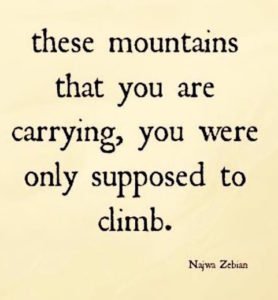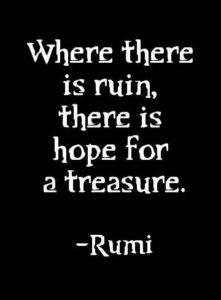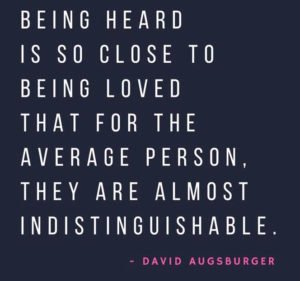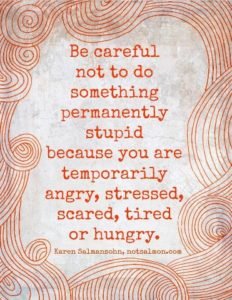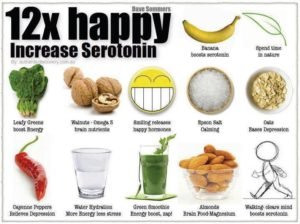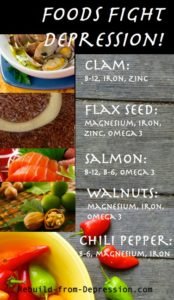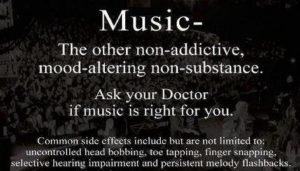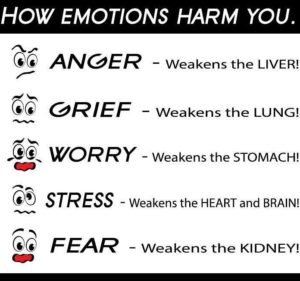
There is a light in this world, a healing spirit more powerful than any darkness we may encounter. We sometimes lose sight of this force when there is suffering, too much pain. Then suddenly, the spirit will emerge through the lives of ordinary people who hear a call and answer in extraordinary ways. – Mother Teresa —
People working in public catering: waiters, cooks and barmen (10.3%),
Doctors, nurses and social workers (9.6%).4. About ¾ of population of the USA take antidepressants.
5. Women are twice as likely to suffer from depression than men. Women may be at a higher risk for depression due in part to estrogen, which may alter the activity of
neurotransmitters that contribute to depression.
6. Researchers found that those who suffer from depression are at risk for low bone mineral density. Depressed women are especially at risk for developing
osteoporosis.
7. Abraham Lincoln first fell into a deep depression after Ann Rutledge, his first love,
died. Lincoln reportedly suffered from chronic depression his entire life.
8. As many as 15% of those who suffer from some form of depression take their lives each year.
9. According to the National Institute of Health (NIH), more than 6% of children suffer from depression and 4.9% of them have major depression.
10. Depressed people get colds more frequently than non-depressed people.
11. Sufferers of depression are more likely to have a heart attack than those who are not depressed. People who have heart attacks or heart surgery are more at risk for depression.
12. Bipolar disorder, or manic depression, affects nearly 6 million American adults in a given year.
13. It was noticed that we have a depression not because of troubles, but because of the lack of positive emotions.
14. It is depression, which leads to 75% of all visits to the psychotherapist.
15. The average video gamer is typically 35-year-old male who is most likely depressed, overweight, and introverted.
16. A depressed woman is more likely to give birth early, increasing health risks for both the woman and the baby. Between 14 and 23% of pregnant women experience some sort of depressive disorder. Eating seafood rich in Omega-3 may help pregnant women with depression.
17. Long-term use of marijuana leads to changes in dopamine production and has been implicated in the onset of depressive symptoms.
18. Antidepressants cannot help in dealing with disease if the person cannot refuse his or her former lifestyle, which has provoked it.
19. The earliest medical description of depression dates back to Hippocrates, the Greek “father of medicine,” who attributed depression, or melancholy, to an imbalance of the body’s four humors. The theory was that too much black bile created a melancholic temperament—literally melanin (black) and cholia (bile). To overcome depression, Hippocrates recommended rebalancing body systems using relaxation and healthy living strategies as well as blood-letting and leeches.
20. Many creative individuals have experienced depression, including Robert Schumann, Ludwig van Beethoven, Peter Tchaikovsky, John Lennon, Edgar Allan Poe, Mark Twain, Georgia O’Keefe, Vincent van Gogh, Ernest Hemmingway, F. Scott Fitzgerald, and Sylvia Plath.
21. On a worldwide basis, depression ranks fourth as a cause of disability and early death according to the Global Burden of Disease Study.
22. Some diseases are interconnected with depression, such as thyroid problems, heart disease, stroke, cancer, Alzheimer’s, Parkinson’s disease, obstructive sleep apnea, and chronic pain.
23. The total cost of depression in the Untied States is estimated to be $44 billion: $12 billion in direct costs of treatment, $8 billion in premature death, and $24 billion in absenteeism and reduced productivity at work. These do not include out-of-pocket family expenses, costs of minor and untreated depression, excessive hospitalization, general medical services, and diagnostic tests.
24. Seasonal affective disorder (SAD) is the term for depressive periods that are related to a change of season. SAD is four times more common in women than in men.
25. There are about 5% of people in the world who never have depression. They are also called “Sunny people”. But most of us have been in such condition not once.
26. Depression can lead even to prison. So Harry Mackinnon was so much afraid of aliens that after some time, he got depressed. To get rid of depression he cracked 97 servers of NASA looking for information about UFO. Now he is sentenced to 70 years imprisonment.
27. 80% of all people with clinical depression who have received treatment significantly improved their lives
If you feel your energy levels are down or you’re too stressed out at work, plant yourself a good-mood garden. You’ll get the benefits of garden therapy too. Some vegetables and herbs are rich in antidepressant compounds and minerals that can take the edge off a bad day and help alleviate full-blown depression.
Antidepressant foods and herbs and how to grow them:
Swiss Chard is packed with magnesium, essential for the biochemical reactions in the brain that boost your energy levels. Magnesium deficiency is a common condition among people diagnosed with clinical depression. Chard is a hardy crop that, if planted even in late summer, will produce until early winter. It can tolerate shade but produces best with lots of sun. You can start harvesting leaves as soon as they appear, but harvest from the outside to not to kill the entire plant.
Blue potatoes – The anthocyanin antioxidants in them are rare. Potatoes reduce inflammation that can lead to bad moods. The skin is packed with iodine that helps stabilize thyroid hormone levels, thus warding off mood swings. Potatoes are about the easiest crops to grow. You can even grow them in a bag of potting soil, without really dirtying your hands. Cut a few drainage holes at the bottom of a bag of potting soil and stand the bag someplace sunny. Bury two “seed potatoes” about 4 inches deep. When flowers start to appear, tip the bag over and dig out the potatoes. To keep the harvest going into the fall, plant a new set of seed potatoes every few weeks.
Cherry Tomatoes – Tomato skin is rich in lycopene that stops the buildup of pro-inflammatory compounds linked to depression. Because lycopene lives in tomato skins, the best way to get it is through cherry tomatoes. Cherry tomatoes are good for containers and will produce more fruit than larger varieties. Plant them so the first row of leaves is covered by dirt.
Black-eyed peas have some of the highest levels of folate of any vegetable. It’s thought that folate plays a role in creating dopamine, serotonin, and norepinephrine, three brain chemicals that, when absent, can make you forgetful, irritable, and unable to sleep. Black-eyed peas need long summers with temperatures averaging between 60° and 70°F. They need warm days and warm nights, with lots of sun and water. You can eat them fresh off the vine, or leave them on the vine until they dry. Save them to eat all winter.
Oregano is rich in caffeic acid, quercitin, and rosmarinic acid, components that combat depression, fatigue, and anxiety. It is very easy to grow.
Sunflowers seeds are a great source for the antidepressant phenylalanine, an amino acid the body turns into norepinephrine. Plant seeds after the last frost. When the seeds in the seed heads start to turn brown, cut them with 2 feet of stem and hang upside down in a dry, well-ventilated place. To eat, soak overnight in water (strong salt water, if a salty flavor is desired), drain, spread on a shallow baking sheet, and roast for 3 hours at 200°F until crisp.
Chamomile is rich in stress-reducing caffeic acid and quercetin and tastes better in the form of tea. Steep chamomile flowers in boiling water for about 10 minutes. German chamomile is best as opposed to other varieties that can taste bitter. It can grow wild as it reseeds itself. Plant in full sun in late spring when there is no risk for frost.
Evening Primrose is a wildflower. Its seeds have the highest levels of tryptophan of all plants. Your body uses it to make mood-boosting serotonin. In the fall harvest when the seedpods begin to fill up, harvest a few seeds and grind them as you would flaxseed into your favorite dishes.
Evening primrose is drought-tolerant and easy to grow in containers or in the ground. There are varieties with flowers ranging from deep reds to light yellows. Sow seeds in groups of four.
Lavender Gardens don’t have to be all about edibles. Treatments with lavender and a few other herbs are used to supplement depression treatments, because the scent is relaxing. Lavender loves dry, sunny areas. English lavender is both fragrant and edible.
St. John’s Wort is most famous herbal anti-depressant. St. John’s Wort contains compounds similar to those found in Prozac. The flowers and leaves are the most valuable part of the plant. Brewed into a tea, it will calm you down and boost your mood. St. John’s wort has many adverse drug interactions, so check with a pharmacist if you’re on any medications. St. John’s Wort is pretty easy to grow. Plant it in spring in partial shade.

